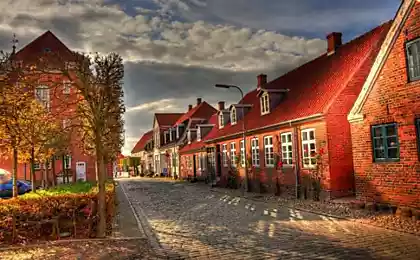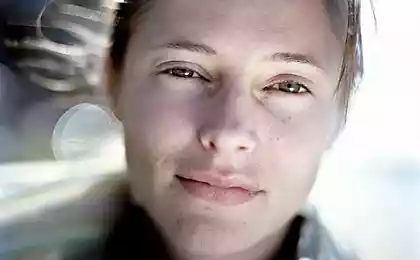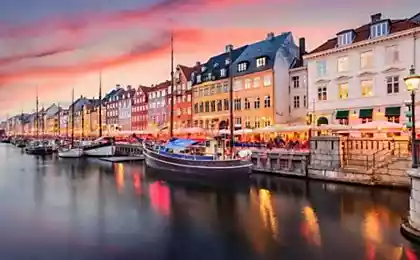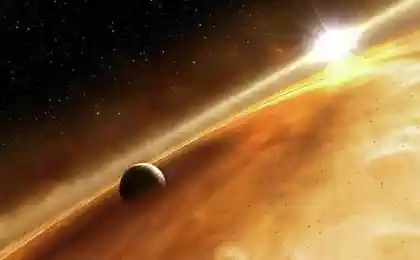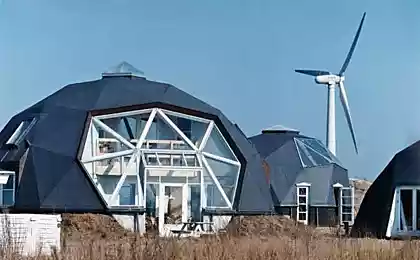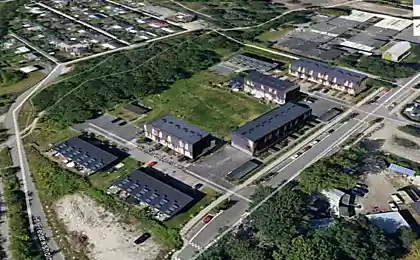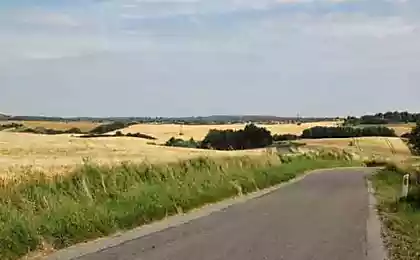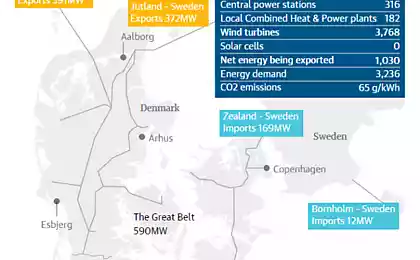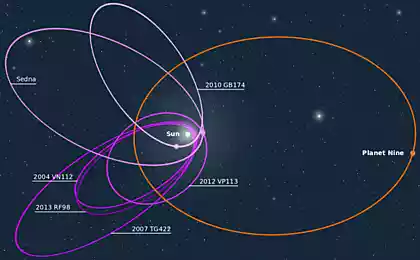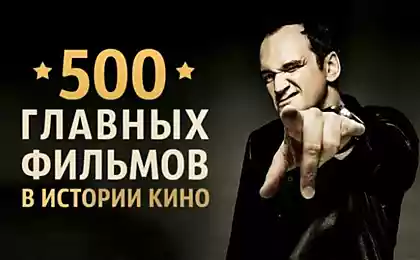219
How is the oldest eco-village in Denmark
Now there is a lot of talk about the creation and prospects for the development of ecovillages. This is a Danish eco-village that dates back to the 1990s.
You can get to Dyssekilde easily and without a car, by train about an hour and a half drive from Copenhagen. This eco-village consists of 74 sustainably designed highly unique apartment buildings that range in type from thatched hobbit-style houses to the most modern.
The 12-hectare site also includes 7 wind turbines, an impressive 20-metre recycling system, chickens, gardens and vegetable gardens to serve 118 people, 60 of whom are children.
Düssekilde's roots date back to the early 1990s, when several pioneers decided to create a "vegetarian, spiritual and humane village" and wrote to various Danish municipalities.
Hundested Municipality was intrigued and responded with a list of six possible locations. So the group hired a bus and went on a trip.
Despite their benevolence, the authorities did not really understand the intentions of the eco-settlers. They expected to see strange communes of hippies dancing naked around trees, so they singled out areas isolated enough to go unnoticed. Things have changed over time.
The entire village community is divided into communes, each responsible for maintaining its own plots, lawns and gardens. Each group has its own social events and events throughout the year.
The settlement of Düssekilde aims to be as carbon-neutral as possible, with architectural innovations making it easier for new homes.
At first, eco-settlers had very strict requirements for themselves and others. They built only thatched houses, some of the largest in Denmark, preached only vegetarianism. Unfortunately, the first houses were very experimental, and built from recycled and biodegradable materials. Unfortunately, this usually means more heat loss.
Over time, they became more loyal to non-vegetarians and used modern materials to build more practical and comfortable eco-homes.
The main founding principles of the community are social interaction, tolerance, respect, sustainability and ecology.
In fact, anyone can live in the eco-village of Dussequild - renting or buying a home - the group is not closed. However, there is only one piece of land left for new construction.
In 2007, geothermal heating was carried out in the village, and the result was so successful that most homes now use this system for heating and obtaining warm water.
Some of the eco-houses — including this one — use passive heat through large glass greenhouses attached to the southern facades.
4 times a year, general meetings on vital issues are held in Dussequild. For current questions, meetings are held on Thursdays. Anyone can make a proposal, the decision is made by voting.
Joining the community requires a one-time entry fee, which is refunded upon departure. The annual membership fee is taxed by Denmark and is used to maintain playgrounds and festivals.
Most of the children were born at home, the kindergarten is located on the premises of the hotel and is funded by the government - as is the case throughout Denmark.
Serious attention in the village is paid to water - the community uses 60-65% of water from average Danish water consumption, thanks to compost toilets and collecting rainwater for flushing toilets, washing machines, and watering gardens.
Filling the containers with excess water led to a small pond in the center of the village, where it brings joy to frogs and children.
Chickens here live in a large chicken coop, in a public garden the size of a hectare. Fruits and vegetables are grown here in addition to the garden plots run by residents. The community also shares waste collection and has a shared laundry.
7 windmills provide more electricity than Dussequild can consume - 450 kilowatts, enough to cover the needs of community homes 2.5 times. The surplus electricity is being sold.
In Denmark, one-fifth of all electricity is wind.
About half of the land owned by Dussequild remains intact, with the exception of one piece of land that will remain so as a wildlife refuge.
The eco-village’s most vocal message is: “There are no direct rules and no sanctions, but everyone is expected to do better in every way possible.” ?
Source: rodovid.me
You can get to Dyssekilde easily and without a car, by train about an hour and a half drive from Copenhagen. This eco-village consists of 74 sustainably designed highly unique apartment buildings that range in type from thatched hobbit-style houses to the most modern.
The 12-hectare site also includes 7 wind turbines, an impressive 20-metre recycling system, chickens, gardens and vegetable gardens to serve 118 people, 60 of whom are children.
Düssekilde's roots date back to the early 1990s, when several pioneers decided to create a "vegetarian, spiritual and humane village" and wrote to various Danish municipalities.
Hundested Municipality was intrigued and responded with a list of six possible locations. So the group hired a bus and went on a trip.
Despite their benevolence, the authorities did not really understand the intentions of the eco-settlers. They expected to see strange communes of hippies dancing naked around trees, so they singled out areas isolated enough to go unnoticed. Things have changed over time.
The entire village community is divided into communes, each responsible for maintaining its own plots, lawns and gardens. Each group has its own social events and events throughout the year.
The settlement of Düssekilde aims to be as carbon-neutral as possible, with architectural innovations making it easier for new homes.
At first, eco-settlers had very strict requirements for themselves and others. They built only thatched houses, some of the largest in Denmark, preached only vegetarianism. Unfortunately, the first houses were very experimental, and built from recycled and biodegradable materials. Unfortunately, this usually means more heat loss.
Over time, they became more loyal to non-vegetarians and used modern materials to build more practical and comfortable eco-homes.
The main founding principles of the community are social interaction, tolerance, respect, sustainability and ecology.
In fact, anyone can live in the eco-village of Dussequild - renting or buying a home - the group is not closed. However, there is only one piece of land left for new construction.
In 2007, geothermal heating was carried out in the village, and the result was so successful that most homes now use this system for heating and obtaining warm water.
Some of the eco-houses — including this one — use passive heat through large glass greenhouses attached to the southern facades.
4 times a year, general meetings on vital issues are held in Dussequild. For current questions, meetings are held on Thursdays. Anyone can make a proposal, the decision is made by voting.
Joining the community requires a one-time entry fee, which is refunded upon departure. The annual membership fee is taxed by Denmark and is used to maintain playgrounds and festivals.
Most of the children were born at home, the kindergarten is located on the premises of the hotel and is funded by the government - as is the case throughout Denmark.
Serious attention in the village is paid to water - the community uses 60-65% of water from average Danish water consumption, thanks to compost toilets and collecting rainwater for flushing toilets, washing machines, and watering gardens.
Filling the containers with excess water led to a small pond in the center of the village, where it brings joy to frogs and children.
Chickens here live in a large chicken coop, in a public garden the size of a hectare. Fruits and vegetables are grown here in addition to the garden plots run by residents. The community also shares waste collection and has a shared laundry.
7 windmills provide more electricity than Dussequild can consume - 450 kilowatts, enough to cover the needs of community homes 2.5 times. The surplus electricity is being sold.
In Denmark, one-fifth of all electricity is wind.
About half of the land owned by Dussequild remains intact, with the exception of one piece of land that will remain so as a wildlife refuge.
The eco-village’s most vocal message is: “There are no direct rules and no sanctions, but everyone is expected to do better in every way possible.” ?
Source: rodovid.me
